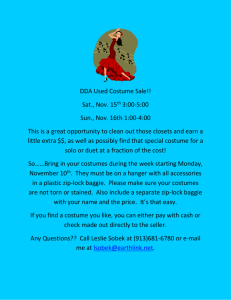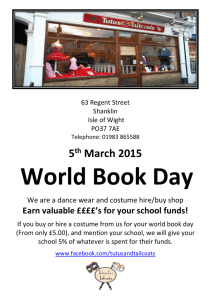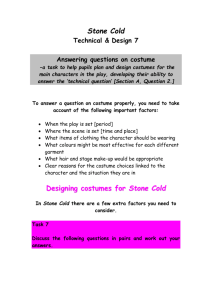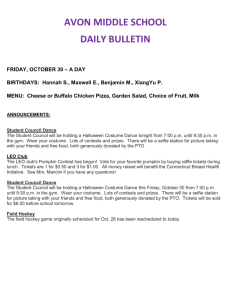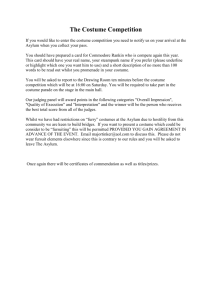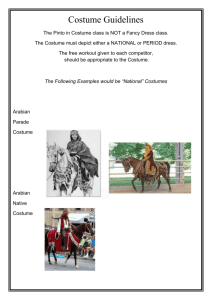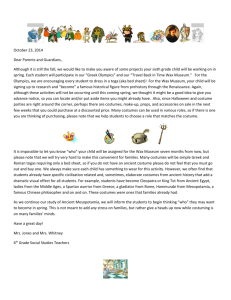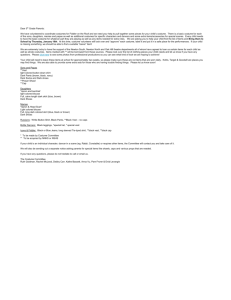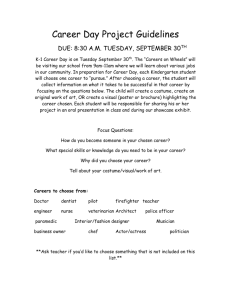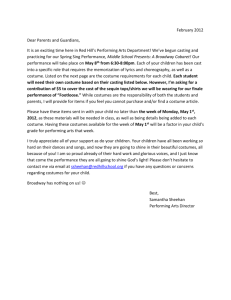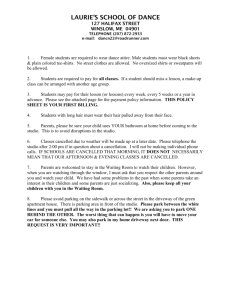The physical setting costume
advertisement
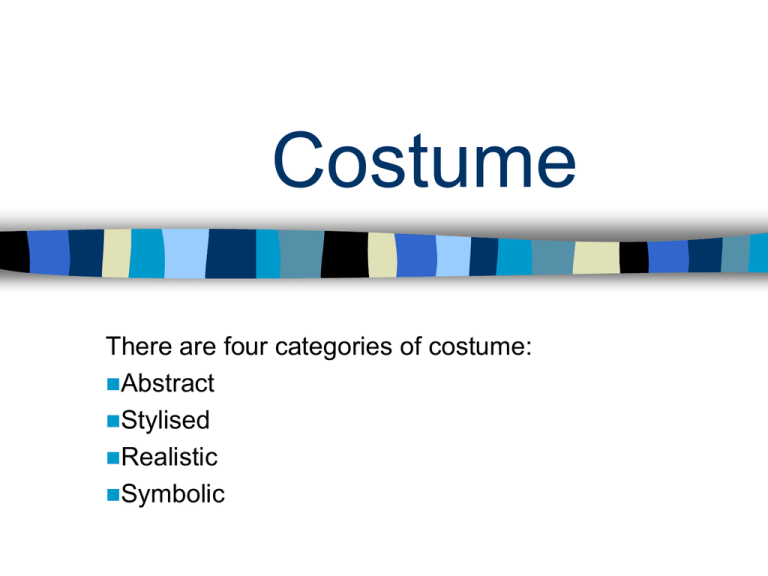
Costume There are four categories of costume: Abstract Stylised Realistic Symbolic Abstract Removed from the original idea so it is no longer recognisable form the theme May purely enhance movement to make the dancers look the same Giving them equal status Stylized A distinctive costume of a style or tradition Relates to a theme or style E.g. we recognise a tutu as being traditional for ballet. Stylized can also mean that they are not fully realistic but are recognisable. E.g. in ‘Penguin Café’ the costumes are designed for human bodies and look half human half animal (specific character) - hybrid Realistic Reinforce the dance idea or subject matter. They support the action content and enhance the dance so we have a clear picture of what is happening C – character H – historic period A – activity T – time of day/season P – political theme O - occupation L - location E - event S – social status Symbolic These might reflect the personality of a character or symbolise historical or religious themes. E.g. reflective silvery fabric used in ‘Flesh and Blood’ by Lea Anderson can be seen to symbolise chain mail from the story Joan of Arc. When designing a costume the following practicalities must be considered. How will the costume: Design allow free movement Distort/obscure shape/movement Comfort/weight/heat Add to the flow of the movement Extend the dancing line Draw attention to a specific body part or movement Exaggerate the space and or shapes of action, e.g. when turning in a full skirt you get the effect of the fabric making a circular shape in the air. Add to the accompaniment by making sound, e.g. bells on ankles Is it gender specific Costume Design Description – always describe using the following Colour, Head size, dress and texture, mask fabric, size, weight, shape and style Make up, Footwear accessorie s and decoration Professional Dance Works Swan Lake’ (1995) by Mathew Bourne ‘Still life at the Penguin Café’(19**) by David Bintley ‘Swansong’ (1987) by Christopher Bruce Costume Designers Sandy Powell designer for Cross Channel. Lea Anderson wanted to draw upon the images of women in fashion magazines in the 1950’s and 1960’s, but wanted the men to be distinctly different. The women wear costumes based from this period as seen in these magazines. The men wear a variety of more modern costumes such as lycra and Hawaiian shirts. Exam questions

